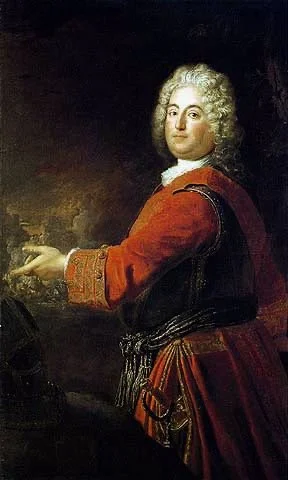Grace Notes
Volume 4
December 2024
Christian Ludwig of Brandenburg
Bach’s Brandenburg Concertos
DONNA REILLY
One of Bach’s most famous and widely-appreciated orchestral works—known today as the Brandenburg Concertos—was presented in March 1721 to Christian Ludwig, the Margrave of Brandenburg and youngest son of the Prince-Elector of Brandenburg, Germany. Bach offered the six concertos in response to the Margrave’s request for some of his compositions. We don’t know whether to blame lost records or atrocious manners, but Christian Ludwig never thanked Bach for the compositions or paid for them; there is no record of his ever having used them. The concertos weren’t a particularly good fit for the Margrave’s own personal orchestral group, but were quite well-suited to an ensemble that Bach was currently directing at the court of Prince Leopold of Anhalt-Cöthen. John Eliot Gardner, in his massive study of Bach, Music in the Castle of Heaven, says that all six were written in 1717, shortly after Bach went to work for Prince Leopold. But other scholars think Bach probably gathered up six of the concertos he’d been working on for several years and put them into one volume, entitled “Six Concertos With Several Instruments…” Whenever they were written, the title Brandenburg Concertos wasn’t used until a century and a half later by Bach’s biographer, Philipp Spitta.
“Several Instruments” indeed! Each of the concertos is scored for a different combination of instruments, with each combination unique. Bach was intrigued by the late concertos of Vivaldi and other Italian Baroque composers, but he has surpassed all of them with this remarkable exploration of the balance between varied groups of soloists and small orchestra.
If you think you’re completely familiar with these beloved pieces, you might want to take a closer look at the solo instruments Bach chose for each concerto, because these remarkable instrument combinations give each concerto its own distinctive personality. For example: If you are used to thinking of the recorder as a simple instrument used for teaching music to elementary school children, get ready for a revelation when you hear Concerto #4. Scored to showcase two recorders and solo violin, this dialogue between the two voices is a perfect balance of contrast between the virtuosity of the violin solos, the velvety sound of the accompanying strings, and the simple, clear, and clean notes of the recorders.
The program notes for Upper Valley Baroque’s January performances of the Brandenburg Concertos will be a gold mine of information on the intricacies of these six famous concertos. They’ll be well worth a careful reading! Ticketholders, look for them in your inbox shortly before the performance dates (January 24, 25, 26).
GRACE NOTES

